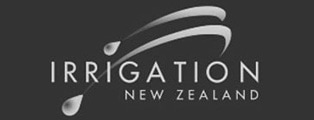Irrigation Studies, Reports & Guidelines
Irrigation NZ – Code of Practice & Irrigation Design Standards (Mar 2007)
This report has been prepared solely for the benefit of the New Zealand irrigation industry. This code of practice provides guidance on the irrigation industry’s expectation of acceptable levels of irrigation design to irrigation designers, irrigation owners and operators. In some circumstances, practices or equipment other than those suggested in the Code may be equally relevant in meeting irrigation industry standards. Irrigation New Zealand believes that if the Code is honestly maintained by the irrigation industry, designers will plan, install and provide the ability to operate irrigation systems in an economic and environmentally sustainable manner.
![]() Download here – Irrigation-design-COP
Download here – Irrigation-design-COP
Guidelines for the Measurement and Reporting of Water Takes (Oct 2014)
These guidelines and preparation of the manual was completed by Opus International Consultants Ltd (Opus) for Irrigation New Zealand (INZ), with funding and support from the Ministry for the Environment. The purpose of this guidance document is to outline the requirements and good industry practice for the selection, installation verification, and validation of water measurement devices/systems required for water permit holders to meet their obligations under the Resource Management (Measurement and Reporting of Water Takes) Regulations 2010.
![]() Download here – Guidelines-for-the-Measurement-and-Reporting-of-Water-Takes-2014
Download here – Guidelines-for-the-Measurement-and-Reporting-of-Water-Takes-2014
Irrigation Energy Efficiency Evaluation Pilot (May 2014)
The Irrigation Energy Efficiency Evaluation Pilot project was managed and endorsed by Irrigation NZ (INZ). This pilot project was a partnership between Irrigation New Zealand (INZ), EECA, and the lines companies of Canterbury and North Otago to determine if an opportunity exists to improve the energy use efficiency of on-farm irrigation systems and their operation, and if so what is the scale. This project confirms there is considerable scope to improve energy use efficiency of on-farm irrigation systems.
![]() Download here – irrigation-energy-efficiency-evaluation-pilot-summary-report-jul-2014
Download here – irrigation-energy-efficiency-evaluation-pilot-summary-report-jul-2014
Irrigation Efficiency Gaps – Review & Stock Take (Feb 2006)
This report was prepared by Aqualinc for Sustainable Farming Fund (SFF) and Irrigation New Zealand (INZ). With increasing demand on the water resources, irrigation efficiency is becoming one of the key issues facing irrigation farmers and water managers in New Zealand. The project summaries: a) expectations and views on irrigation efficiency; b) the state of the knowledge on irrigation efficiency; c) identify the gaps in knowledge; and d) decide what further work is required, including communication and education.
![]() Download here – Irrigation-Efficiency-Gaps
Download here – Irrigation-Efficiency-Gaps
Value of Irrigation in New Zealand (Nov 2014)
The purpose of this report was to quantify the economic contribution that irrigation makes to the New Zealand Economy. This report was completed by the NZ Institute of Economic Research and AgFirst Consultants NZ for the Ministry of Primary Industries.
![]() NZIER-17040-Output-Value-of-Irrigation-final-report-17Nov
NZIER-17040-Output-Value-of-Irrigation-final-report-17Nov
The Economic Value of Potential Irrigation in Canterbury (C Saunders & J Saunders, 2012)
The purpose of this report was to provide Canterbury District Council (CDC) with the ability to estimate the total benefits for Canterbury and New Zealand from irrigation scenarios under the implementation of the Canterbury Water Strategy. Three modelled scenarios are covered in this report, based on GIS data describing the total potential irrigable area of Canterbury, and base current irrigation of 500,000 ha in Canterbury.
![]() Economic-Value-of-Increased-Irrigation-in-Canterbury-2012
Economic-Value-of-Increased-Irrigation-in-Canterbury-2012
Irrigation in New Zealand (Rockpoint, 2012)
This research report provides an overview of Irrigation in New Zealand and is based on public information. The primary sector plays a dominant role in New Zealand’s economy, accounting for 75% of export earnings. The value of primary output varies according to production (farm output), the degree of value-add processing, and product pricing (commodities prices are typically set globally).
Irrigation schemes currently cover some 650,000 ha of land. At the time of this report, proposed irrigation schemes covering a further 550,000 ha are in various stages of consent. Some are enhancements of existing schemes while others overlap to varying degrees. Most of the proposed schemes are being sponsored by the district and regional councils.
![]() http://www.rockpoint.co.nz/pdfs/Irrigation-in-New-Zealand-Rockpoint.pdf
http://www.rockpoint.co.nz/pdfs/Irrigation-in-New-Zealand-Rockpoint.pdf
The Economic Value of Irrigation in New Zealand (Apr 2004)
This paper was developed by MAF Policy Information and Regions Group staff to provide information on the socio-economic contribution irrigation currently makes to the New Zealand economy, and an estimate of the potential to add to economic growth. The purpose of the analysis, which was initiated before the Programme of Action (PoA) on water was started, is to examine the economic contribution of current and potential water use through irrigation in the knowledge that the benefits of water for other uses are being addressed separately. The report, therefore, makes no judgement on the relative merits to other complementary or competing water uses. This report is commended to all that have an interest in water allocation and use.
![]() cwms-tech-rpt-3b-Economic-value-of-Irrigation-Apr-04-final
cwms-tech-rpt-3b-Economic-value-of-Irrigation-Apr-04-final



